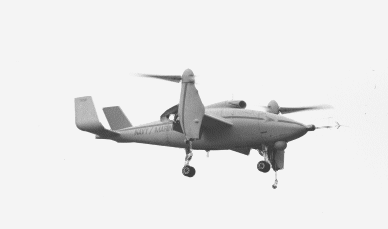
The US Department of Defense's vertical take-off and landing (VTOL) unmanned air vehicle (UAV) demonstration has entered its next phase with the exercising of contract options with Bell Helicopter Textron and Bombardier.
Three months of VTOL UAV trials, which involved Bell's Eagle Eye, Bombardier's CL-327 Guardian and the Science Applications International (SAIC) Vigilante, were concluded on 11 June at the Yuma Proving Grounds in Arizona, but not before a Guardian vehicle crashed.
SAIC, a late arrival, achieved only 7.5h of the 50h flight test programme because of technical problems with its flight control system. The company proposed to complete the programme at another site at no additional cost to the US Government, but project officials turned down the offer and required SAIC to return the $250,000 remaining from the $1.8 million contract award.
About $3 million in unexpended fiscal year 1997/8 funding is being used to exercise contract options with Bell and Bombardier for air vehicle integration with the Sierra Research UAV common automated recovery system (UCARS) and to prepare for shipboard trials scheduled for next year.
Each firm received $1.5 million, but can expect to earn nearly $5 million to finish the next phase of work. The rest would come from funding add-ons to the fiscal year 1999 defence budget.
The CL-227 Sentinel, the predecessor of the Guardian, was integrated with a version of UCARS in 1994 and, during the recent flight trials, the CL-327 was tracked by the system.
The USN reserves the right to exercise the same contract option with SAIC after company-sponsored flight demonstrations prove the system's maturity. Meanwhile, the service is planning a fast-track acquisition programme should a go-ahead be given to procure a VTOL UAV.
On 10 June, the CL-327 departed from controlled flight over the test range at an altitude of 6,000ft (1,800m), 51min from completing a 6h flight. Accident investigators concluded that the lower fuel tank attachment lugs failed, resulting in tank separation from the air vehicle and engine fuel starvation. The composite lug failure was due to resin degradation and delamination under normal flight loads. The lugs are being strengthened.
Source: Flight International























